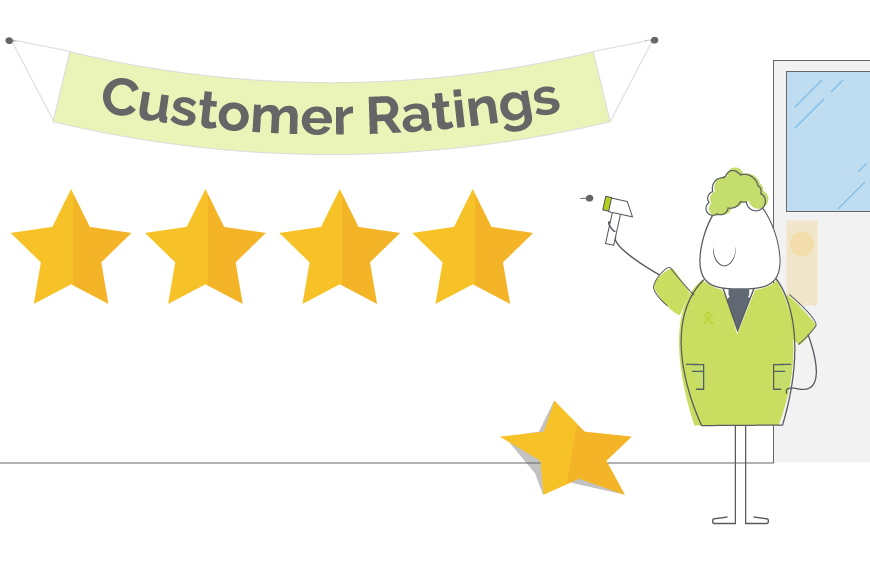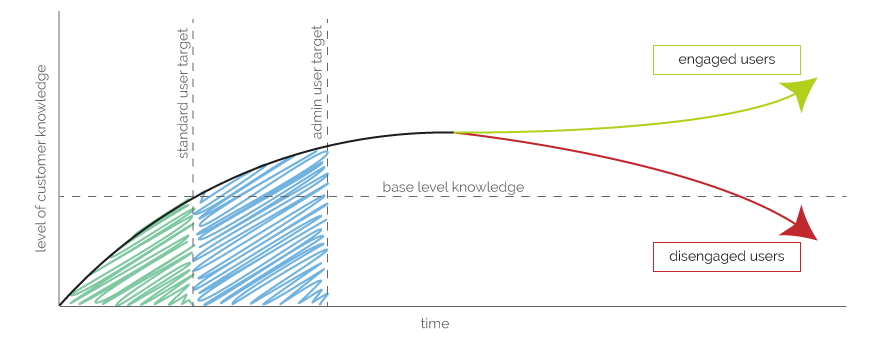What Is Customer Success?
18 Nov 2024
(Republished from an earlier article)
If you ask anyone at OpenCRM who or what is Customer Success – they are likely to point you in my direction, as the Customer Success Manager. That’s right, I get to write a blog post all about myself today! Egos aside, this blog post is about what my job role entails, and how the role of Customer Success is becoming an increasingly significant job in today’s business world.
Back to the Roots
Effectively customer success has always been around, it just never used to have a name. In an age where subscription-based sales have become so prevalent, it has switched from being a nice-to-have to forming an essential part of your business. If you can, think back to people wearing t-shirts with Mickey Mouse or the Coca Cola logo in the 1970’s, owning a Sony walkman in the 80’s or even how Greggs clothing has taken off big style! That is the start of customer success – consumers proudly endorsing a product (or service) that they love.
The success factor here is that you are not paying for advertising. Your customers enjoy your products so much that they are happy to serve as a public endorsement for you. But it was quite a simple process whereby consumers used a product, gained satisfaction from it, and wanted to share that information and become a part of a trend. When they caught on, trends were liable to snowball – a pre-internet version of going viral, if you like. Nowadays, this can be anything from “likes” on social media to reviews on Amazon or Capterra, photos on Instagram and so on.
The Shift to a Subscription Culture
There is a difference between simpler Fast Moving Consumer Goods (FMCG) and more sophisticated products and services that require a degree of learning and engagement before you can fully reap the benefits. Lots of FMCG products are easily accessible and offer instant gratification (for example, buying and eating a chocolate bar), so it’s not hard to assess that particular customer satisfaction.
Many FMCG and other goods also operate on a subscription basis. For example, for my printer at home I pay a monthly fee to print up to 100 pages per month, and my ink cartridges come for free. The paid-for apps on my phone also run on a monthly or annual payment plan. In ever-increasing environments, businesses encourage us to pay for subscriptions rather than outright ownership. Many software services nowadays operate on an ongoing subscription basis.
Acquisition vs Retention
Some of these products, particularly services, are more of a “slow-burner” when it comes to satisfaction. Both you, as the service provider, and your client have invested time and effort in getting the relationship set up. After that initial learning curve, things become easier as the client starts to get a Return On Investment (ROI). But that initial stage is the tricky one. You need to keep the customer aware of the bigger picture, so that they understand the advantages that come from the correct set-up and can think about the longer-term ROI.
Take for example the market we are in. CRM is now an established industry, with a number of decades under its belt. Most business owners will have at least heard of CRM even if they haven’t (yet) taken the plunge. As more and more companies get on-board, retention becomes every bit as important as acquisition.

The Learning Curve
A word of warning to suppliers. You might think that once a client is over the initial learning curve, they won’t have the appetite to stop doing business with you and start again elsewhere. They have gone through a lengthy implementation process and are probably not in a rush to repeat. You might consider the barriers to exit to be relatively high. However, CRM is far from being a static market. New features, enhancements and integrations are added all the time, as the product grows in maturity. What was a natural fit on day one may not work a little further down the line. The supplier can’t afford to be complacent – they need to work hard to keep their customers happy and maintain retention.
Introducing Customer Success
Based on the above picture, it is clear that there is a need for a new role within the business. Sales have already done their bit, so they are not necessarily best placed to manage this. Besides which, they still have their sales job to do. Then you have your support team, who are there to help customers, resolve problems and manage any crisis. This team usually works reactively, responding to customer requirements as and when they need them.
Enter Customer Success. This role entails a thorough knowledge of your service and of your customers.

Do we have what it takes?
We don't restrict which features you have access to in OpenCRM based on how many users you have. You get everything right out of the box. Click to find out if we've got the features you need.
find out moreRelationship-Focused
Sales and support are often focused on the shorter term – generating revenue or preventing an existing problem. Customer Success has the luxury of looking at the longer term. Taking a step back from the front line, a Customer Success Manager can look at the bigger picture to determine what the customer is trying to achieve. Anticipating customer challenges and providing solutions before the customer encounters problems. That’s where your Customer Success Strategy comes into play.
For example, we had a customer asking to add some custom fields to their Opportunities module. Unknown to them, they were trying to add some functionality that already sat within the Sales Orders feature. By asking support how to work with custom fields, they highlighted something for Customer Success to work on. Our Customer Success team gets involved, giving some demonstrations to the client on a test system, to illustrate how they could get more out of their subscription.
Satisfaction All-Round
This is a win-win situation. The client is happy – there’s no increase to their subscription, but they get more for their money. The service provider, in turn, has increased the satisfaction of their client, which in turn improves the chances of retention. That retention also means a guaranteed source of revenue as the client continues to pay their subscription.
And who knows, maybe that happy customer will talk about your work on social media, review sites or even provide you with a case study. That has a similar effect to the bumper sticker in the back of your car – letting your clients do the selling for you.
Where does Customer Success sit within the Organisation?
Customer Success lives right at the heart of the organisation, working with sales, projects and support. It complements those teams as opposed to replacing any of them. This is one of those things where each business might have its own different recipe. You may decide that you need to focus your efforts on clients that are showing signs of wanting to leave. Or you could prioritise new customers to ensure they get the highest level of service from you from day one. Sales focus on bringing in revenue. Support concentrates on solving problems. Projects deliver what the client has bought. Customer Success brings all of that together to help ensure the customer ends up with the desired results of using your service.
The Bigger Picture
If your support people are out there fighting fires, and sales are on the frontline bringing the clients in, Customer Success gives your business the tool to step back and look at the bigger picture. Support stop the trees from burning down, sales are constantly planting new saplings, and Customer Success ensures that these grow into strong healthy trees, a component of your ever-growing forest.
My role is to build our Customer Success team and I work with our clients and prospects helping them get the most from their subscription – it is a fun challenging role as no two days are the same. When not in the office I’ll be either making a noise on my guitar or getting my trainers on for a run out in the Yorkshire Dales, North York Moors or the Lake District.